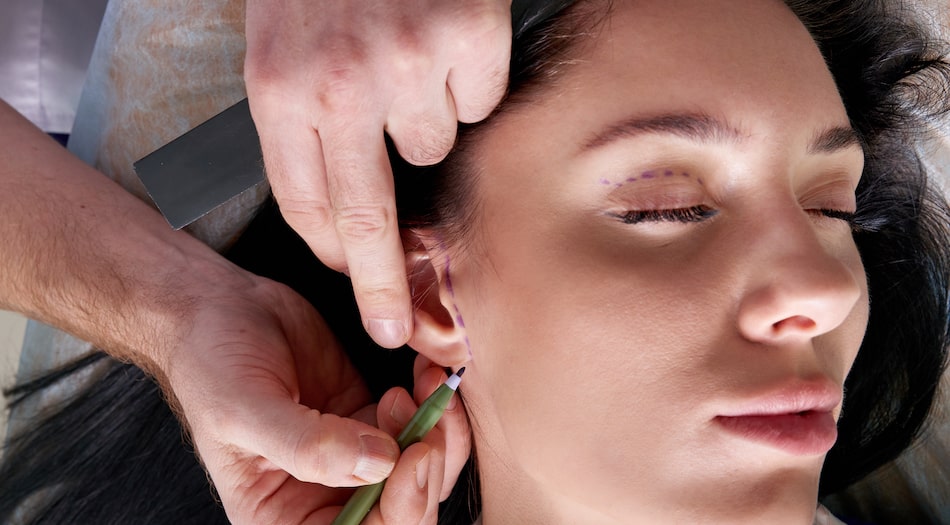
The prominence of the ears on the head means that their appearance is hard to miss on a person. Someone who is not happy with the size or shape of their ears can have otoplasty to adjust their look as well as their positioning on the ears. There are multiple reasons that a person might want to have otoplasty to address the look of the ears and they include the ears protruding greatly from the head or they have some sort of structural abnormality that impairs they functionality. Keep reading this informative article to discover more about otoplasty and how it is performed.
 Otoplasty, which is sometimes referred to as cosmetic ear surgery, is generally performed on the area of the ear that is known as the auricle (which is the visible part of the outer ear).
Otoplasty, which is sometimes referred to as cosmetic ear surgery, is generally performed on the area of the ear that is known as the auricle (which is the visible part of the outer ear).
The auricle is an area of the ear that is comprised of folds of cartilage that are covered in skin. The auricle will start to develop before a person is born and it will continue to develop in the first few years of the life of a person. If the auricle is not able to properly develop, otoplasty is an option that can alter and correct the size and shape of the ears.
When it comes to otoplasty, there are multiple options available to patients and they include:
Ideal candidates for one of the otoplasty techniques described above include someone with ears that are either smaller or larger in size than a normal appearance, a person with ears that greatly protrude from the head, and someone with ears that are abnormal in size or shape due to some form of trauma or injury or a structural issue with the ear that has been present since birth.
In addition, an ideal candidate is a child who is teased by others about the appearance of their ears or an adult who does not have a good amount of self-esteem or confidence due to the look of their ears. Children can start to have the procedure around age six or seven (as the ears will have developed to a size that is close to the size of an adult ear) while there is no age limit for the procedure for adults.
Finally, someone who is not happy with the appearance of the ears after an initial otoplasty procedure might be an ideal candidate for a revision otoplasty surgery.
The procedure can take anywhere from one to three hours and patients will be given anesthesia in order to remain comfortable during the surgery.
The surgeon will cut out the designated amount of cartilage. Instead of cutting the cartilage, the surgeon might make the decision to fold the cartilage and then stitch it into place. No matter the choice, the surgeon will make a small cut that is located at the back of the ear in order to access the cartilage. The incision will be closed with stitches.
Otoplasty can be performed on one ear or on both ears in order to remove the necessary amount of cartilage and skin to give the ears a look that is smaller or larger in appearance while maintaining a natural appearance.
Once the surgery is over, patients will have a dressing placed over the ears to protect them from outside forces. Patients will need to avoid sleeping in a position on the ears and they should also avoid wearing clothing that needs to be pulled over the head during the healing and recovery process. There will be some common side effects after the procedure and they include redness, bruising, swelling, soreness, infection, asymmetrical results, and changes in the sensation of the skin,
Once the dressing is removed from the head, patients will need to wear an elastic headband to protect the ears for anywhere from four to six weeks.
It can take about two to three weeks before the ears start to gain an improved appearance that can be noticed by others. However, it can take about a year for the patient to be able to view and enjoy the final results. Once the final results are achieved by the patient, they should last a lifetime as long as the patient does not injure the ears or experience any type of trauma to the ears.
- MA